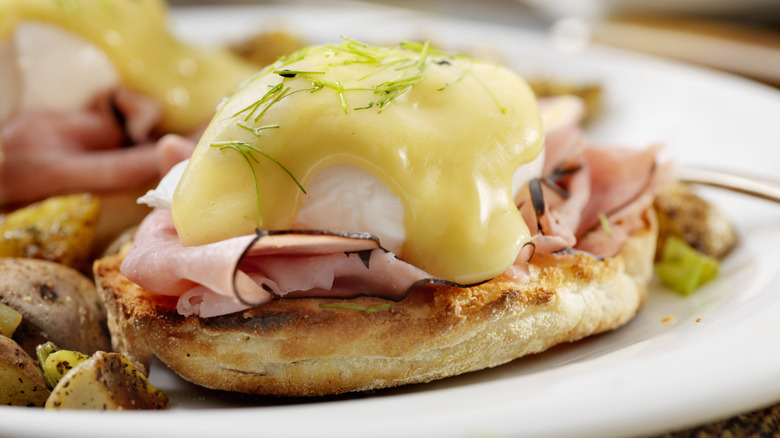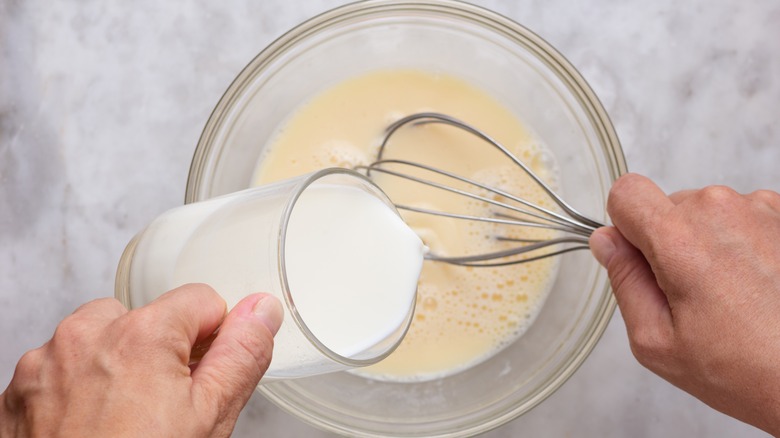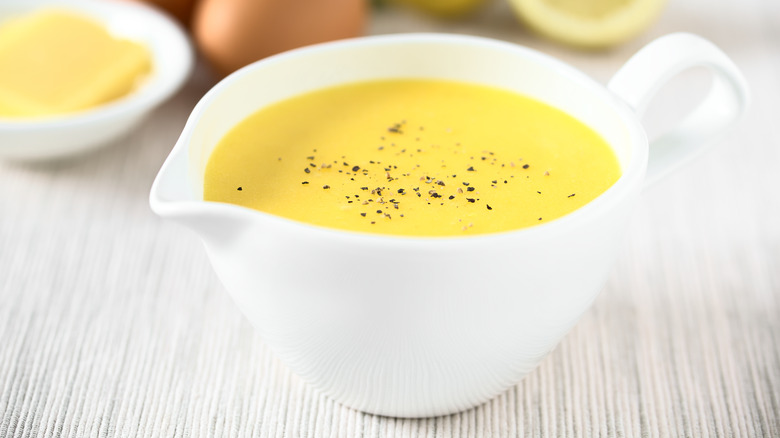Eggs Benedict Casserole Is An Easy Way To Make The Classic Dish For A Crowd
The recipe for classic eggs Benedict calls for placing a poached egg and a slice or two of Canadian bacon, ham, or crispy bacon on top of an English muffin, and topping it all with a generous pour of Hollandaise sauce. If you're serving breakfast to only a few people, making individual plates of eggs Benedict might not be too much work. But when you're cooking for a crowd, there is an easier way to prepare the delicate brunch favorite to feed the masses: Turn it into an eggs Benedict-inspired casserole.
Converting a dish like eggs Benedict into a breakfast casserole without losing what makes the original so iconic might seem like a risky endeavor. It's not. Many of the steps for making a casserole are the same: Spreading chopped ingredients (in this case, the English muffins and your chosen protein) into a greased casserole dish, covering it with a liquid, and baking.
Although this casserole follows the same cooking methods and has the same flavors as the classic eggs Benedict preparation, it does require some deviation from the original dish. Namely, the way the eggs are prepared changes drastically.
The eggs are served differently
Making the classic original version of eggs Benedict requires you to perfectly poach the eggs in boiling, swirling water until the whites are set but the inner yolks are still runny.
Although you could poach the eggs before adding them to this casserole dish, a poached egg likely won't hold up to the prolonged heat of the baking stage. The time spent in the oven could thoroughly cook the yolk, making the eggs more closely resemble the hard-boiled style. So when making this casserole, it's best to whisk the eggs in a separate bowl before pouring them over the other fillings.
When whisking the eggs, you could add a little bit of milk to create a creaminess the dish might lack from replacing the poached eggs. Additionally, whisking in spices and seasonings to the egg and milk mixture can enhance the flavor of the dish. Onion powder, salt, pepper, paprika, and garlic powder can all complement the taste of the other ingredients.
The sauce is an essential topping
Of course, topping slices of the casserole with Hollandaise sauce is essential for giving each bite that eggs Benedict taste. Hollandaise sauce is typically made from slow-cooking egg yolks and lemon juice, with melted butter drizzled in. You can also add your desired seasonings to enhance the flavor to your particular tastes.
While the yolks in the sauce marry deliciously fit with the eggy base of this dish, the acidity from the lemon juice will cut through the salty, savory meat and egg flavors to add an extra-refreshing pop. The melted butter will add some richness as it smooths out the sauce, which can make for a great complement to the other elements of the casserole.
The next time you want to make eggs Benedict for a crowd, you don't need to stress over poaching a bunch of eggs and assembling each plate individually. Simply add all your ingredients to a casserole dish, bake, slice it up, and serve with some Hollandaise sauce on top.


